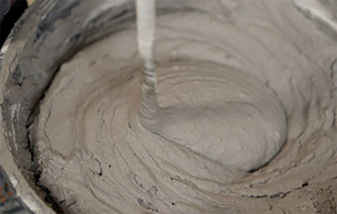
Nov . 07, 2024 16:33 Back to list
Methyl Hydroxyethyl Cellulose Production and Suppliers Overview for Industry Applications
Methyl Hydroxyethyl Cellulose An Overview of Its Manufacturing and Applications
Methyl Hydroxyethyl Cellulose (MHEC) is a prominent cellulose ether widely utilized across various industries due to its versatile properties. As a non-ionic, water-soluble polymer derived from cellulose, MHEC is primarily produced from natural cellulose through a series of chemical modifications, which make it an essential ingredient in numerous applications.
Manufacturing Process of MHEC
The manufacturing of MHEC involves several critical steps that ensure the quality and efficacy of the final product. Initially, natural cellulose, commonly sourced from wood pulp or cotton, undergoes a process of alkali treatment to create alkali cellulose. This step is crucial as it increases the reactivity of cellulose by converting it into a form that can readily undergo etherification.
Following this, the alkali cellulose is reacted with methyl chloride and ethylene oxide in a controlled environment, typically under specific temperature and pressure conditions
. This etherification process introduces both methyl and hydroxyethyl groups into the cellulose chain. The exact proportions of these groups can be adjusted to tailor the properties of the MHEC produced, such as its viscosity, solubility, and thermal stability.Once the desired reaction is achieved, the resulting product is neutralized, filtered, and dried to remove any residual reagents. The final MHEC powder is then milled into a fine grade to enhance its dispersibility in formulations. Quality control throughout the manufacturing process is vital, as it ensures that the MHEC meets the specific requirements for various applications, including construction, pharmaceuticals, and food processing.
Properties and Benefits of MHEC
mhec-methhyl hydroxyethyl cellulose manufacturer

MHEC is celebrated for its unique set of properties that make it a preferred choice in many formulations. One of its most notable characteristics is its soluble nature in both hot and cold water, which allows for easy incorporation into various products. Additionally, MHEC imparts thickening, binding, and stabilizing properties, making it ideal for use in adhesives, paints, and coatings.
In the construction industry, MHEC serves a crucial role as a rheology modifier in cement-based products such as tile adhesives, grouts, and mortars. Its ability to enhance workability and reduce sagging during application makes it indispensable in modern construction projects. Furthermore, MHEC is compatible with various additives and resins, which further broadens its applicability in formulations.
In the pharmaceutical sector, MHEC acts as a controlled-release agent, thickener, and stabilizer for suspensions and emulsions. Its biocompatibility and non-toxic nature render it an excellent choice for drug formulations, ensuring patient safety and product efficacy.
Environmental Considerations
As a derivative of natural cellulose, MHEC is considered a more sustainable option compared to synthetic polymers. The raw materials used in its production are renewable, and advancements in manufacturing processes continue to focus on reducing environmental impact. Manufacturers are increasingly adopting greener practices, such as utilizing less harmful solvents and optimizing energy consumption, to enhance the sustainability of MHEC production.
Conclusion
Methyl Hydroxyethyl Cellulose is a multifunctional polymer that plays a vital role in numerous industries. Its manufacturing process, characterized by careful control and quality assurance, results in a product that meets the diverse needs of modern applications. As industries strive for sustainability and functionality in their materials, MHEC remains an important and versatile compound in the world of cellulose derivatives, offering significant benefits while being mindful of environmental considerations. Whether in construction, pharmaceuticals, or food processing, MHEC continues to demonstrate its indispensable value across various sectors.
-
Versatile Hpmc Uses in Different Industries
NewsJun.19,2025
-
Redispersible Powder's Role in Enhancing Durability of Construction Products
NewsJun.19,2025
-
Hydroxyethyl Cellulose Applications Driving Green Industrial Processes
NewsJun.19,2025
-
Exploring Different Redispersible Polymer Powder
NewsJun.19,2025
-
Choosing the Right Mortar Bonding Agent
NewsJun.19,2025
-
Applications and Significance of China Hpmc in Modern Industries
NewsJun.19,2025







